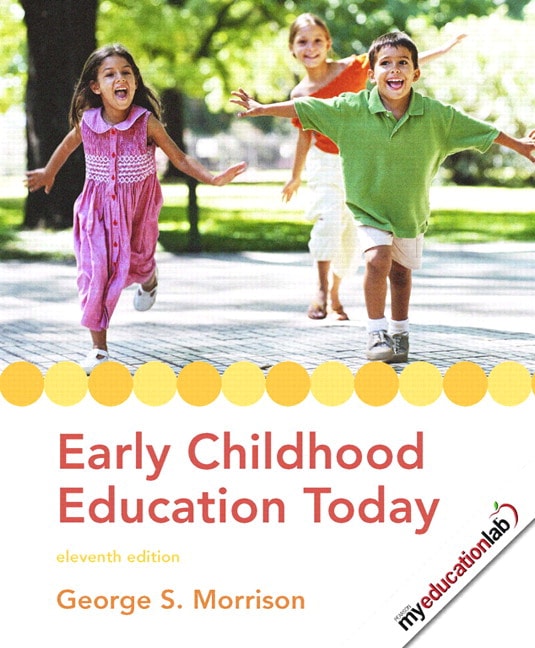
30.00$ - Purchase this E-book
Category : Higher Education
(Note: Each chapter contains the features Linking to Learning, Activities for Professional Development, and Readings for Further Enrichment) PART 1 EARLY CHILDHOOD EDUCATION AND PROFESSIONAL DEVELOPMENT 1. You and Early Childhood Education: What Does It Mean to Be a Professional? What Is a Professional? The Five Goals of Professionalism Professional Dispositions What Are New Roles for Early Childhood Professional Today? 2. Current Issues and Public Policy: Contemporary Influences on Children and Families Public Policy and Current Issues Family Issues Social Issues Policy and Programming Trends Accommodating Diverse Learners 3. Observing and Assessing Young Children: Effective Teaching Through Appropriate Evaluation What Is Assessment? Assessment for School Readiness What is Observation? What Are Critical Assessment Issues? Accommodating Diverse Learners PART 2 FOUNDATIONS: HISTORY AND THEORIES 4. The Past and the Present: Prologue to the Future Why Is the Past Important? Historical Figures and Their Influence on Early Childhood Education The Beginnings of Kindergarten in the United States Twentieth Century Early Childhood Educators From Luther to the Present: The Essentials of Good Educational Practices Views of Children Through the Ages Accommodating Diverse Learners Child-Centered Education 5. Theories Applied to Teaching and Learning: Foundations for Practice Theories of Learning and Development Piaget's Theory of Learning Lev Vygotsky and Sociocultural Theory Abraham Maslow and Self-Actualization Theory Erik Erikson Howard Gardner Urie Bromfenbrenner and Ecological Theory Accommodating Diverse Learners New Directions in Cognitive Development PART 3 PROGRAMS AND SERVICES FOR CHILDREN AND FAMILIES 6. Early Childhood Programs: Applying Theories to Practice The Growing Demand for Quality Early Childhood Programs Principles of the Montessori Method The Montessori Method in Action High/Scope: A Constructivist Approach Reggio Emilia Waldorf Education: Head, Hands, and Heart 7. Child Care: Meeting the Needs of Children, Parents, and Families The World of Child Care What Is Child Care? Types of Child Care Programs What Constitutes Quality Care and Education? The Effects of Care and Education on Children 8. The Federal Government: Supporting Children's Success Federal Legislation and Early Childhood Head Start Programs Other Federal Initiatives Accommodating Diverse Learners PART FOUR THE NEW WORLD OF EARLY CHILDHOOD EDUCATION 9. Infants and Toddlers: Foundation Years for Learning What Are Infants and Toddlers Like? Young Brains: A Primer Motor Development Intellectual Development Language Development Psychosocial and Emotional Development Infant and Toddler Mental Health Quality Infant and Toddler Programs Preparing Environments to Support Infant and Toddler Development Accommodating Diverse Learners 10. The Preschool Years: Getting Ready for School and Life Why Are Preschools So Popular? What Are Preschoolers Like? School Readiness: Who Gets Ready for Whom? Play and the Preschool Curriculum The New Preschool Curriculum: Standards and Goals Helping Preschoolers Make Successful Transitions Accommodating Diverse Learners Preschool Issues 11. Kindergarten Education Who Attends Kindergarten? Readiness and Placement of Kindergarten Children The Changing Kindergarten What Should Kindergarten Be Like? Environments for Kindergarteners Curriculum in Kindergarten Kindergarten Issues Accommodating Diverse Learners The Future of Kindergarten 12. The Primary Grades Teaching in Grades One to Three What Are Children in Grades One to Three Like? Primary Education Today Looking to the Future PART 5 MEETING THE SPECIAL NEEDS OF YOUNG CHILDREN 13. Technology and Young Children The Computer Generation Equity in Technology Technology and Special Childhood Populations Implementing Technology in Early Childhood Education Programs Parents and Technology The Technological Future and You 14. Guiding Children The Importance of Guiding Children's Behavior A Social Constructivist Approach to Guiding Children Teacher Effectiveness Training Nine Keys to Guiding Behavior Development of Autonomous Behavior Physical Punishment Trends in Guiding Children 15. Multiculturalism Multicultural Awareness Multicultural Infusion Bilingual Education Programs Trends in Multicultural Education 16. Children with Special Needs Children with Disabilities Gifted and Talented Children Abused and Neglected Children 17. Parent, Family, and Community Involvement Changes in Schooling Changes in Families Education as a Family Affair Guidelines for Involving Parents and Families Community Involvement and More Appendix A NAEYC Code of Ethical Conduct and Statement of Commitment Appendix B NAEYC Guidelines for Developmentally Appropriate Practice in Early Childhood Programs Appendix C Time Line: The History of Early Childhood Education Table of Contents
Get Early Childhood Education Today (with MyLab Education), 11th Edition by George S. Morrison, University of North Texas


0 commentaires:
Enregistrer un commentaire